
Scandinavia is a subregion of Northern Europe, with strong historical, cultural, and linguistic ties between its constituent peoples. Scandinavia most commonly refers to Denmark, Norway, and Sweden. It can sometimes also refer to the Scandinavian Peninsula. In English usage, Scandinavia is sometimes used as a synonym for Nordic countries. Iceland and the Faroe Islands are sometimes included in Scandinavia for their ethnolinguistic relations with Sweden, Norway and Denmark. While Finland differs from other Nordic countries in this respect, some authors call it Scandinavian due to its economic and cultural similarities.
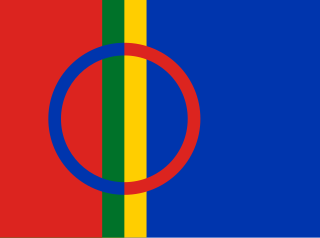
The Sámi are the traditionally Sámi-speaking peoples inhabiting the region of Sápmi, which today encompasses large northern parts of Norway, Sweden, Finland, and of the Kola Peninsula in Russia. The region of Sápmi was formerly known as Lapland, and the Sámi have historically been known in English as Lapps or Laplanders, but these terms are regarded as offensive by the Sámi, who prefer the area's name in their own languages, e.g. Northern Sámi Sápmi. Their traditional languages are the Sámi languages, which are classified as a branch of the Uralic language family.

Sápmi is the cultural region traditionally inhabited by the Sámi people. Sápmi is in Northern Europe and includes the northern parts of Fennoscandia, also known as the "Cap of the North".

The northern region of Europe has several definitions. A restrictive definition may describe Northern Europe as being roughly north of the southern coast of the Baltic Sea, which is about 54°N, or may be based on other geographical factors such as climate and ecology.

Lapland is the largest and northernmost region of Finland. The 21 municipalities in the region cooperate in a Regional Council. Lapland borders the region of North Ostrobothnia in the south. It also borders the Gulf of Bothnia, Norrbotten County in Sweden, Troms and Finnmark County in Norway, and Murmansk Oblast and the Republic of Karelia in Russia. Topography varies from vast mires and forests of the South to fells in the North. The Arctic Circle crosses Lapland, so polar phenomena such as the midnight sun and polar night can be viewed in Lapland.

Enontekiö is a municipality in the Finnish part of Lapland with approx. 1,800 inhabitants. It is situated in the outermost northwest of the country and occupies a large and very sparsely populated area of about 8,400 square kilometres (3,200 sq mi) between the Swedish and Norwegian border. Finland's highest point, the Halti fell with a height of 1,324 metres (4,344 ft) above the mean sea level, lies in the north of Enontekiö, where the municipality occupies a part of the Scandinavian Mountains. The administrative centre of Enontekiö is the village of Hetta. About one fifth of the community's population are Sami people. Enontekiö's main industries are tourism and reindeer husbandry.

A fell is a high and barren landscape feature, such as a mountain or moor-covered hill. The term is most often employed in Fennoscandia, Iceland, the Isle of Man, parts of northern England, and Scotland.
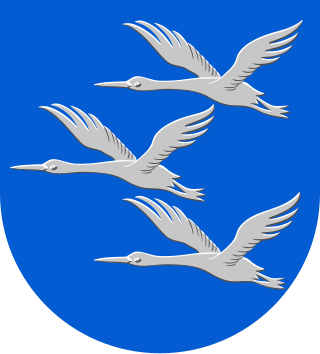
Äänekoski is a town in Finland. It is located in the Central Finland region, about 45 kilometres (28 mi) north of Jyväskylä. The town has a population of 17,977 and covers an area of 1,138.39 square kilometres (439.53 sq mi) of which 253.84 km2 (98.01 sq mi) is water. The population density is 20.32 inhabitants per square kilometre (52.6/sq mi).
Kvenland, known as Cwenland, Qwenland, Kænland, and similar terms in medieval sources, is an ancient name for an area in Fennoscandia and Scandinavia. Kvenland, in that or nearly that spelling, is known from an Old English account written in the 9th century, which used information provided by Norwegian adventurer and traveler Ohthere, and from Nordic sources, primarily Icelandic. A possible additional source was written in the modern-day area of Norway. All known Nordic sources date from the 12th and 13th centuries. Other possible references to Kvenland by other names and spellings are also discussed here.

Kvens are a Balto-Finnic ethnic minority in Norway. They are descended from Finnish peasants and fishermen who emigrated from the northern parts of Finland and Sweden to Northern Norway in the 18th and 19th centuries. In 1996, Kvens were granted minority status in Norway, and in 2005 the Kven language was recognized as a minority language in Norway.

The Sámi people are a Native people of northern Europe inhabiting Sápmi, which today encompasses northern parts of Sweden, Norway, Finland, and the Kola Peninsula of Russia. The traditional Sámi lifestyle, dominated by hunting, fishing and trading, was preserved until the Late Middle Ages, when the modern structures of the Nordic countries were established.

Fennoscandia, or the Fennoscandian Peninsula, is the geographical peninsula in Europe which includes the Scandinavian and Kola peninsulas, mainland Finland, and Karelia. Administratively, this roughly encompasses the mainlands of Finland, Norway and Sweden, as well as Murmansk Oblast, much of the Republic of Karelia, and parts of northern Leningrad Oblast in Russia.
Nordic and Scandinavian Americans are Americans of Scandinavian and/or Nordic ancestry, including Danish Americans, Faroese Americans, Finnish Americans, Greenlandic Americans, Icelandic Americans, Norwegian Americans, and Swedish Americans. Also included are persons who reported 'Scandinavian' ancestry on their census. According to 2021 census estimates, there are approximately 9,365,489 people of Scandinavian ancestry in the United States.
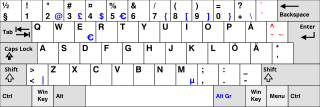
The two main official languages of Finland are Finnish and Swedish. There are also several official minority languages: three variants of Sami, as well as Romani, Finnish Sign Language and Karelian.

Swedish is the official language of Sweden and is spoken by the vast majority of the 10.23 million inhabitants of the country. It is a North Germanic language and quite similar to its sister Scandinavian languages, Danish and Norwegian, with which it maintains partial mutual intelligibility and forms a dialect continuum. A number of regional Swedish dialects are spoken across the country. In total, more than 200 languages are estimated to be spoken across the country, including regional languages, indigenous Sámi languages, and immigrant languages.
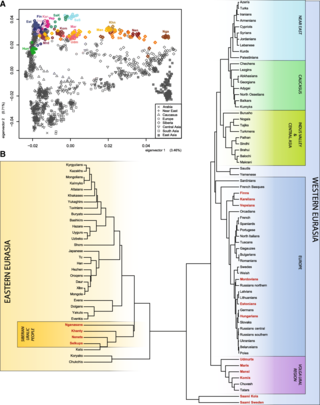
Genetic studies on Sami is the genetic research that have been carried out on the Sami people. The Sami languages belong to the Uralic languages family of Eurasia.

Sámi languages, in English also rendered as Sami and Saami, are a group of Uralic languages spoken by the Sámi people in Northern Europe. There are, depending on the nature and terms of division, ten or more Sami languages. Several spellings have been used for the Sámi languages, including Sámi, Sami, Saami, Saame, Sámic, Samic and Saamic, as well as the exonyms Lappish and Lappic. The last two, along with the term Lapp, are now often considered pejorative.
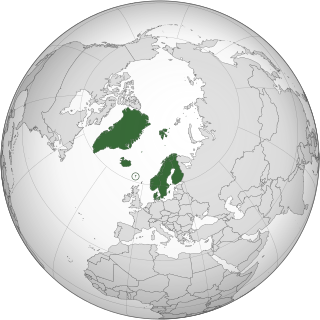
The Nordic countries are a geographical and cultural region in Northern Europe and the North Atlantic. It includes the sovereign states of Denmark, Finland, Iceland, Norway and Sweden; the autonomous territories of the Faroe Islands and Greenland; and the autonomous region of Åland.
Sámi politics refers to politics that concern the Sámi ethnic group in Norway, Sweden, Finland and Russia. In a more narrow sense, it has come to indicate the government of Sámi affairs by Sámi political institutions. This article deals with Sámi political structures, with an emphasis on the contemporary institutions.

Reindeer herding is when reindeer are herded by people in a limited area. Currently, reindeer are the only semi-domesticated animal which naturally belong to the North. Reindeer herding is conducted in nine countries: Norway, Finland, Sweden, Russia, Greenland, Alaska, Mongolia, China and Canada. A small herd is also maintained in Scotland.














